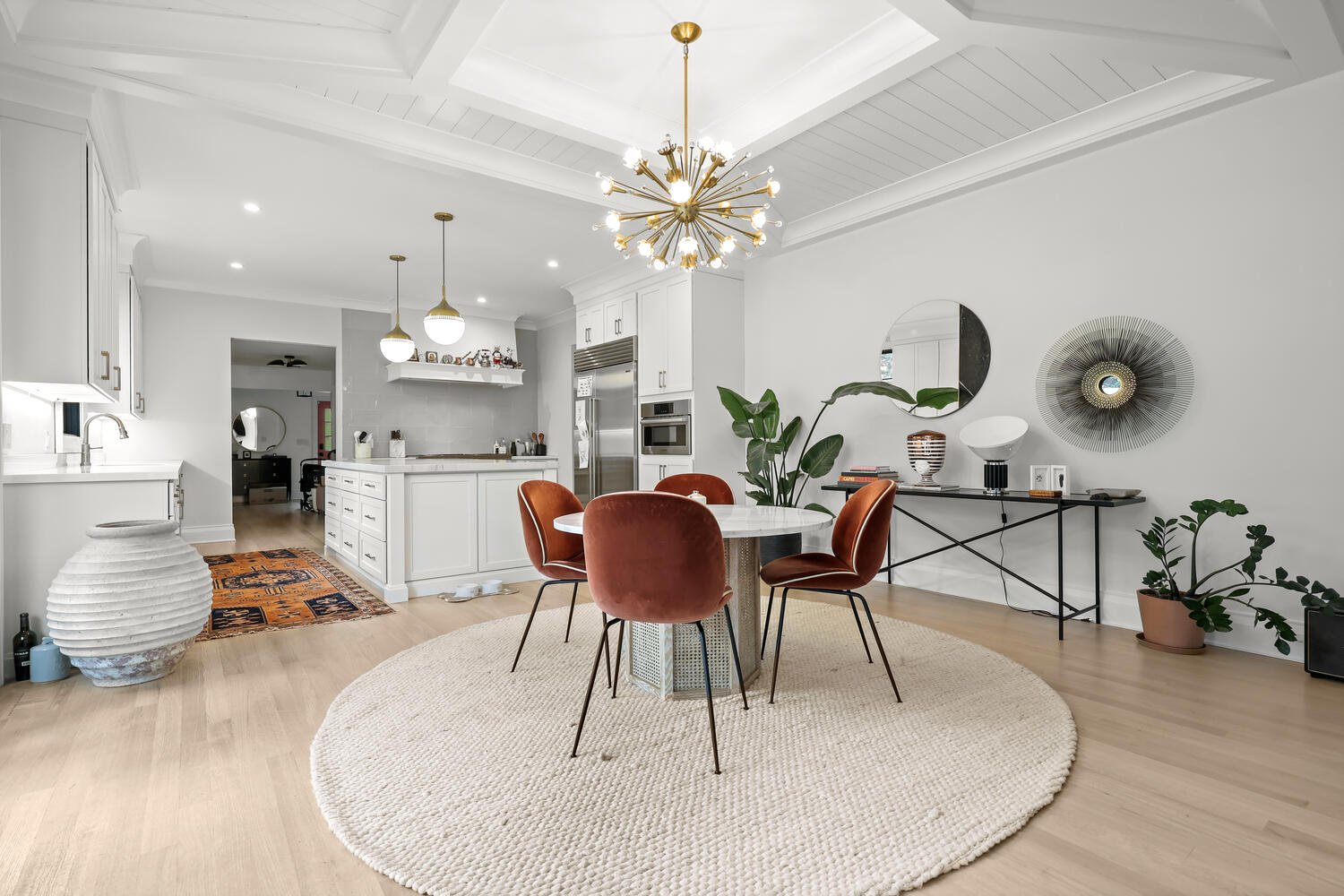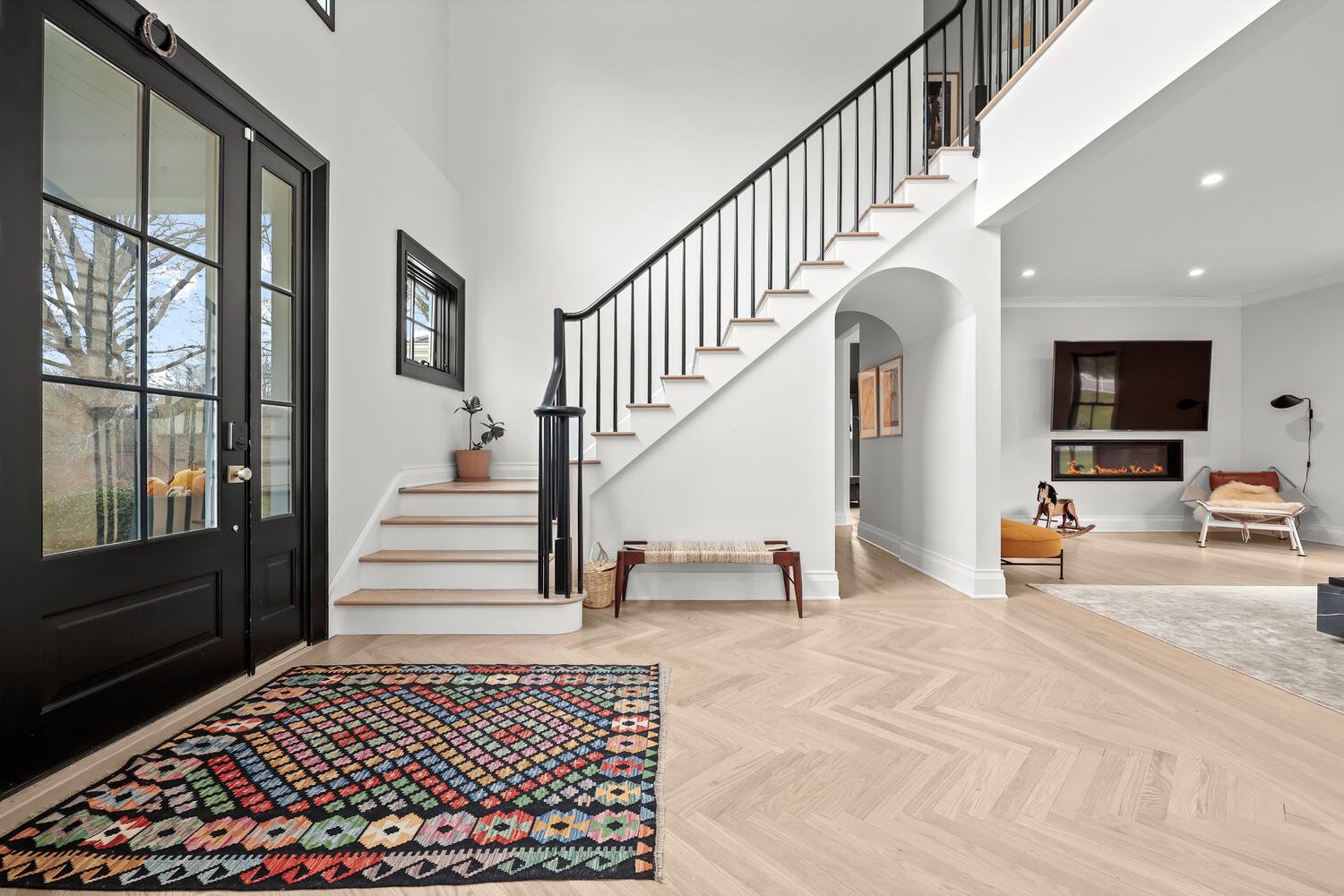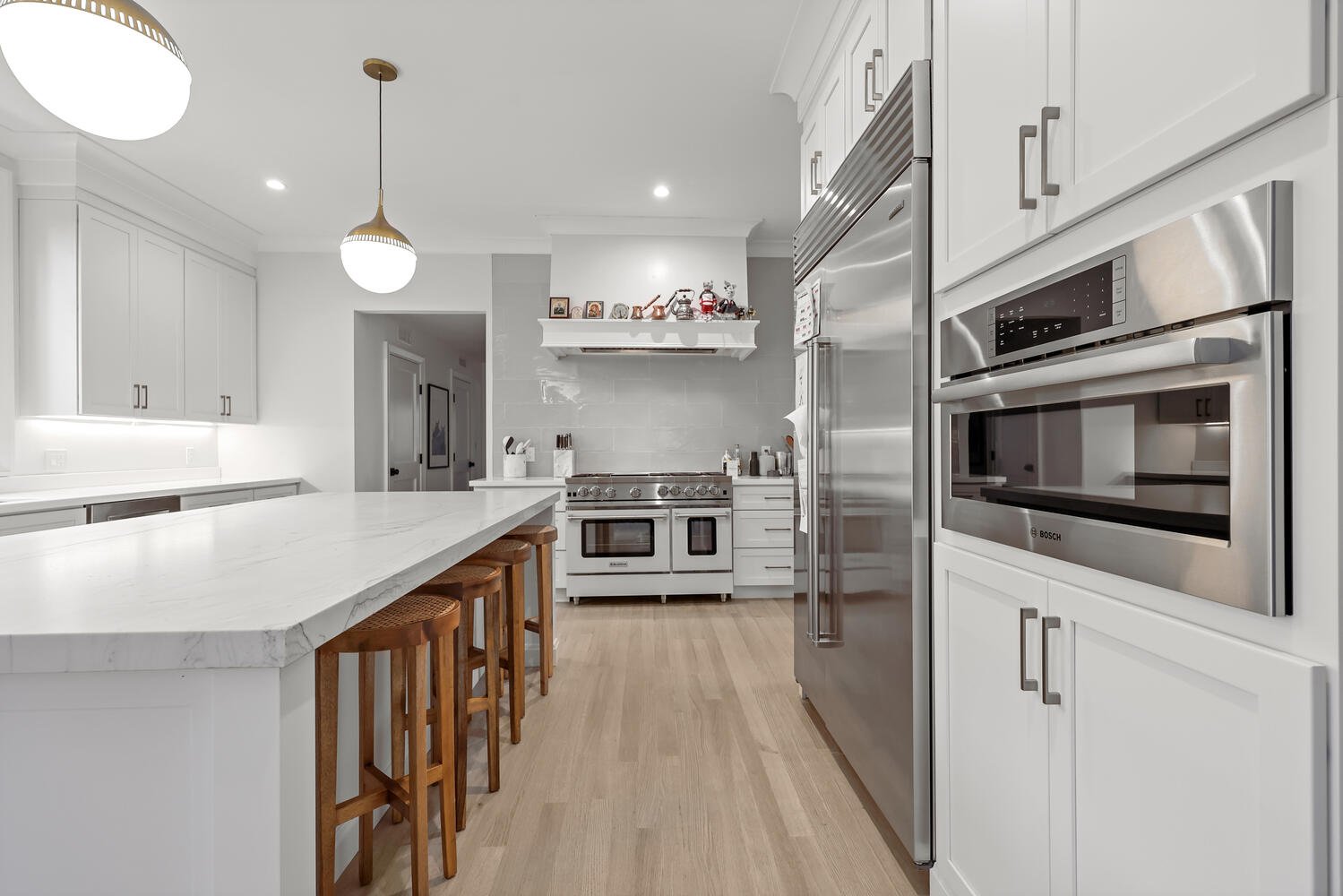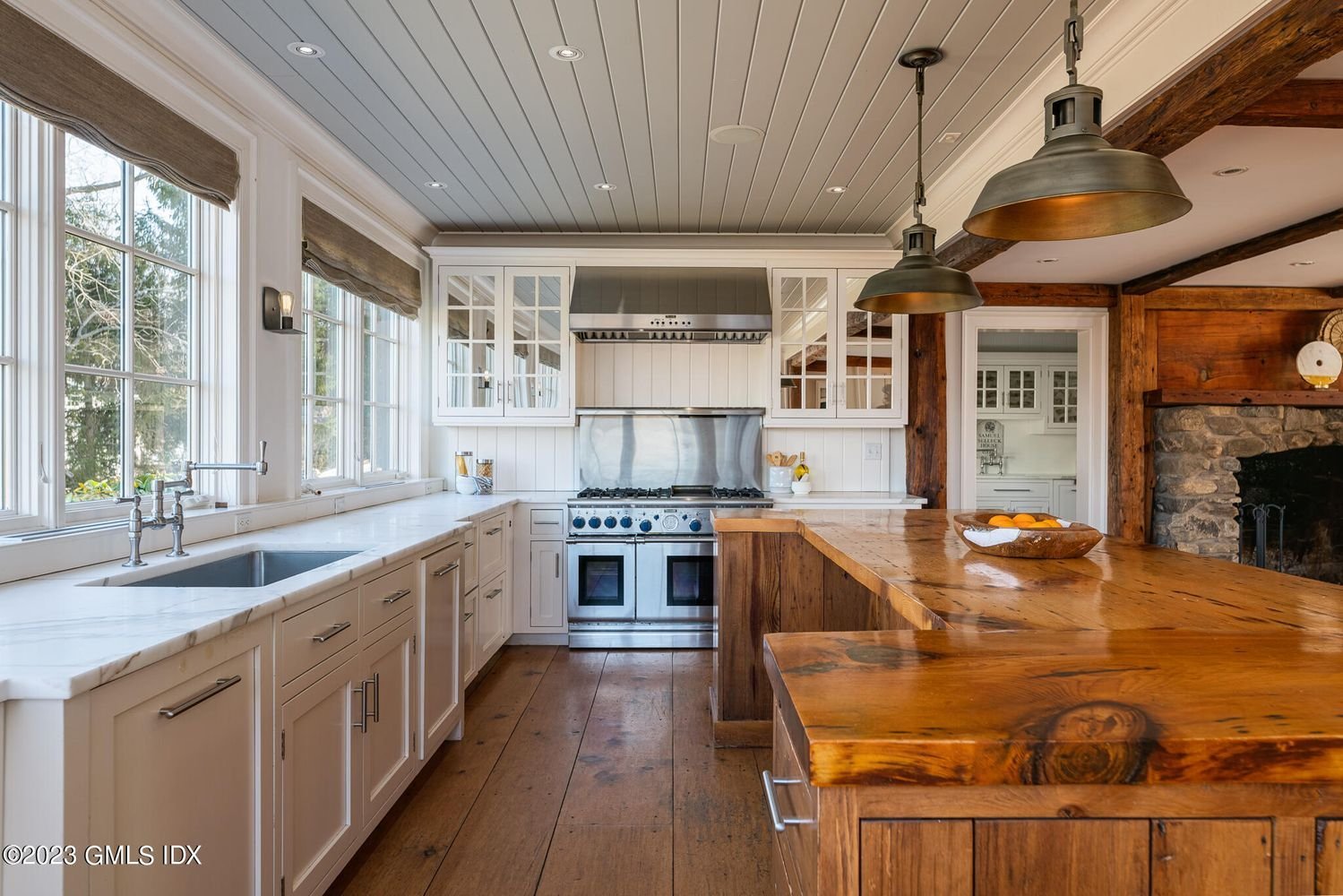How To Choose a Hardwood Floor: The Ultimate Guide
When it comes to flooring for your home, hardwood floors reign supreme. There’s no denying the natural beauty of the wood and the richness it adds to your home. In fact, it’s often top of the list of must-haves for my clients searching for a home in Greenwich CT.
Photo From: Jenny Allen Listing
If they’re maintained well, hardwood floors can last up to a hundred years. That’s the type of lasting power homeowners love to see. Carpet and vinyl flooring simply can’t compete with their level of durability. And, unlike carpet, hardwood floors don’t accumulate allergens, dust mites or spores. Households with little ones can rest assured knowing their home’s flooring is perfectly safe.
Photo From: Jenny Allen Listing
Living in Connecticut, hardwood flooring in homes has become the norm. Potential buyers have come to expect it. The good news for homeowners who don’t currently have hardwood floors? They offer a great return on investment! Homeowners can expect to see a return of 106% and can increase their home’s value by up to 2.5% depending on the scope of the project according to the National Association of Realtors’ latest Remodeling Impact Report.
So if you’re looking to upgrade to hardwood floors, or simply curious about all the options, I’m breaking down everything you need to know.
Engineered vs Solid Wood Flooring
While your first instinct might be to instantly gravitate toward solid hardwood flooring, it’s not the best choice for every room in your home. Basements, for example, are subject to changes in humidity for which engineered hardwood is better suited. Waterfront homes may also find engineered hardwood to be the better option.
Solid hardwood flooring is made of a solid piece of lumber cut to a specific thickness. These floors can be sanded and refinished several times but they are more prone to be impacted by variable humidity.
Engineered hardwood flooring consists of a veneer of solid wood with layers of plywood underneath. This flooring is not the same as laminate flooring – it’s still considered hardwood flooring. The difference is what lies beneath the top of the plank. Engineered hardwood can only be refinished a few times, depending on the thickness of the planks. These floors are much more resistant to moisture and don’t need to be nailed to a wood subfloor like solid hardwood does.
Hardwood Types
Hardwood flooring can be constructed from a variety of wood species. This is the fun part! Each wood type offers a unique wood grain pattern, color tone and hardness level. Let’s take a look at the most common wood types to determine the best fit for your home.
Photo From: Jenny Allen Listing
Oak
This is by far the most popular and readily available option. Oak wood flooring is offered in two distinct types: red and white oak.
Red oak has naturally warmer tones and swirled grain patterns. The color and graining can vary from one board to the next. Perfect if you’re going for a country chic or rustic contemporary look!
White oak has natural grey undertones and ranks higher on the hardness scale than red oak. This makes it a better match for higher-traffic areas. The low variation from plank to plank creates a more uniform and elegant look – ideal for ultra-modern homes.
Walnut
With its rich, chocolate tones and distinctive swirled graining, walnut wood flooring adds an element of drama. These floors score lower on the hardness scale than oak flooring, so it's not ideal for high-traffic areas. If you protect them against scuffing, walnut floors offer a consistent, elegant and sophisticated look.
Maple
This flooring scores higher than oak on the hardness scale so homes with tons of traffic can rejoice! It's naturally a lighter color wood but varies significantly in tones. From beige to warm tan to a slight red hue homeowners can have fun selecting the right choice for their space. Maple has a fine-grain pattern that creates a versatile look. Perfect for a wide variety of decor styles.
Fun Fact: Bowling alleys use maple hardwood floors for their lanes.
Cherry
Unmistakeably, cherry hardwood adds an element of richness to any space. The deep warm hues and smooth grain pattern appeal to homeowners looking for a feel of opulence. Cherry wood tends to darken over time and it’s ranked on the low end for hardness levels. This flooring is best suited for areas of the home that see less use.
Unfinished vs. Prefinished Hardwood Floors
Let’s chat about hardwood finishes! Unfinished hardwood flooring is installed then sanded and stained. This gives owners the option of selecting a custom stain but the installation process is a little messier. Plus you’ll be dealing with fumes in your space. You don’t have to worry about uneven edges because you’re sanding down the wood. Unfinished floors are cheaper to purchase but more expensive to install.
Finished hardwood floors cost a little more but you’ll ultimately save money on labor. They are offered in a variety of stains and finishes. You can immediately install them and don’t have to worry about toxic fumes in your home. You can’t customize them to a specific shade, so this won’t work if you’re trying to match already set flooring. But they do often come with a manufacturer's warranty in case of a defect in staining or finish.
Hardwood Floor Plank Width
Photo From: Jenny Allen Listing
Photo From: Jenny Allen Listing
When it comes to selecting the width of your hardwood flooring, there are a few things to keep in mind. Primarily: what’s the size of your rooms and are you opting for a more traditional or more modern look?
Traditionally, hardwood flooring planks had a width between 2”- 3”. Wider plank flooring has since taken over in popularity and offers a more modern look. Today, you can find widths available up to 24”. I personally think the sweet spot lies in the 4”- 8” range for a look that’s both up-to-date and versatile.
The size of the room is another factor to consider. Wider plank flooring can make a smaller room feel out of proportion. To not overwhelm smaller spaces, it’s best to choose a plank width less than 8”.
If you want to visually increase the size of a larger room you can install your wood planks parallel to the longest wall. This tip also works to create the illusion of widening hallways and narrow spaces.
So there you have it! Everything you need to know before diving head first into your hardwood floor remodel. And if you’re looking for the best contractors in the area to tackle the job, reach out!





